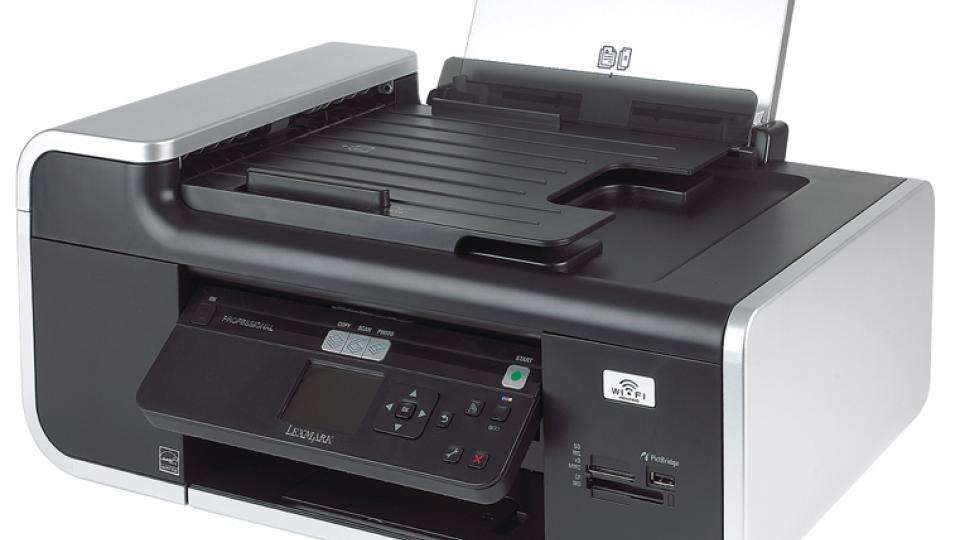The X4975 is the latest addition to Lexmark's Professional inkjet MFP range, aimed primarily at home and small office workers.
It's expensive but has lots of features, including a memory card reader, automatic duplexer, automatic document feeder (ADF), a 2½in colour screen and automatic print head alignment. There's also a lengthy five-year RTB warranty.
After a painfully slow driver installation process, you can select your connection method from either USB, wired Ethernet or 802.11b/g wireless. For home office use, this flexibility is ideal. Wireless networking means that your printer can be put wherever it will fit, rather than being limited to locations that are easily accessible. It's also a boon to laptop users who'd rather not be bound to the printer by a cable.
Unfortunately, the X4975 has no built-in ability to search for networks, and you can't enter security passwords directly on it, either. Most people will have to configure the printer's wireless settings manually. Lexmark's wireless connection wizard requires you to connect the printer to your PC via USB. You can then easily select your network and enter your password. We quickly established a wireless connection, but had to restart the printer after switching from wired to wireless networking. Alternatively, it does support WiFi Protected Setup (WPS), which you'll find on many routers and allows you to connect supported peripherals securely at the push of a button.
Standard-quality text was dark, well defined and sharp. It was quick to print, too, at 7.6ppm. Draft text was just as sharp, but the lettering was thinner, although good enough for most day-to-day printing tasks. Colour prints looked good and our business graphs and illustrations were reproduced clearly, but with colour print speeds of just 1.3ppm, you'll be waiting a long time for an illustrated presentation. Photo printing didn't take long - a single 6x4in photo took around two minutes to emerge - but quality was poor, with magenta-tinted white areas and ink that failed to dry completely on Lexmark's own-brand paper.
High-yield 43XL colour cartridges cost over £20 each, but last for around 500 pages. The mono 44XL cartridges have the same page yield and cost around £20. Using high-yield cartridges, a mixed-colour page costs 7.8p, which is a little high for an MFP of this price.
The 600x1,200dpi resolution of the scanner is rather low, and we weren't at all happy with the ADF. The flimsy guides did little to hold pages in position. Several of our test pages became misaligned as they went through the rollers, resulting in ADF paper jams, torn and creased originals and useless scans or copies
Standard flatbed scans were less problematic. Document scans at 150dpi were clear, although small text was a little fuzzy at 100 per cent magnification, a problem we didn't encounter when we scanned at 300dpi. Scan speeds were slow, though acceptable for occasional use.
The scanner interface is basic but easy to use. It lacks an auto-cropping feature and the only colour controls are a pair of brightness and contrast sliders. You can scan from the flatbed or the ADF at resolutions up to the MFP's maximum 600dpi. The interface remains open between scans, but previews and settings aren't retained when you close and re-open the interface.
Although it has a great range of features, the X4975 doesn't perform well enough to justify its price. Slow colour print speeds, a low-resolution scanner and an ADF that damaged our original documents all make this a poor choice for home or business use, despite its impressive warranty and network support. Canon's Pixma MX850 is more expensive but costs less to run and has more features.
